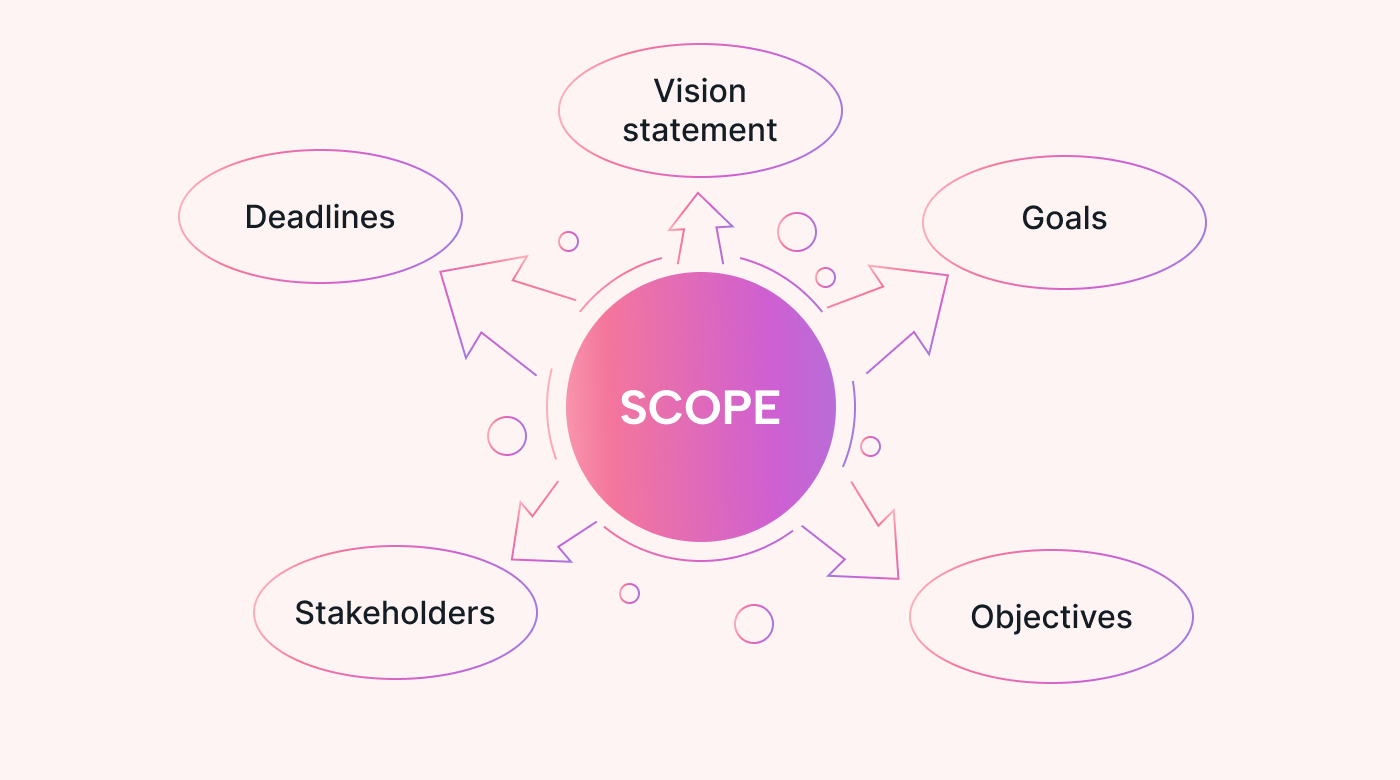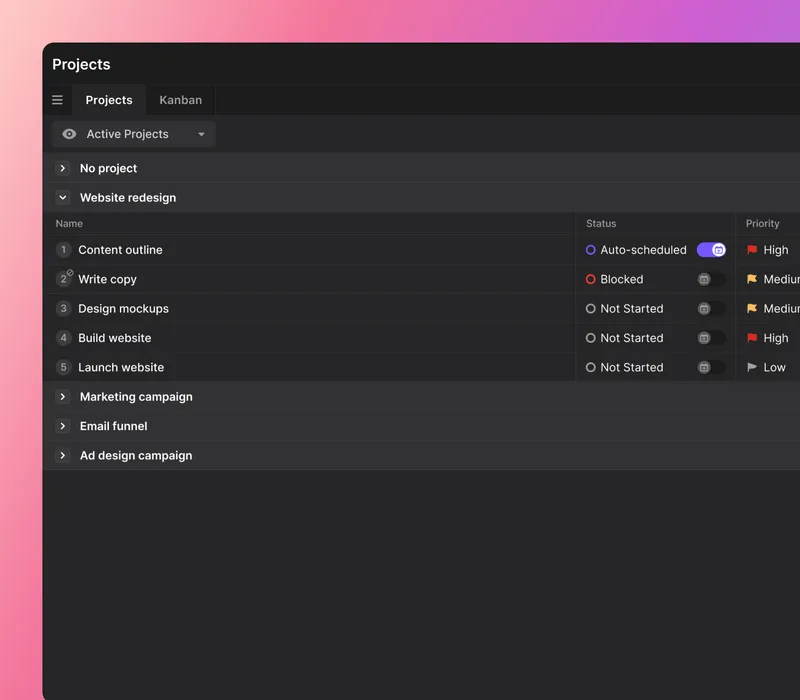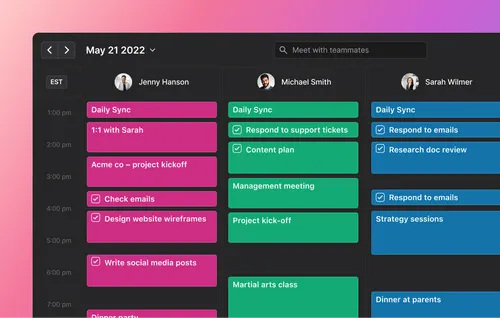Defining project scope is a critical step that sets the foundation for project success.
The project scope defines the boundaries and expectations of a project. It outlines goals and objectives and details when and how. And sometimes, it includes project constraints, assumptions, and predicted costs.
Without a clear and well-defined project scope, projects are likely to experience scope creep. This creates a bad situation that'll cause missed deadlines, cost overruns, and unsatisfied stakeholders.
In this article, we'll explore the steps involved in defining project scope. We'll also discuss the importance of defining project exclusions and constraints. Finally, we'll look at identifying project assumptions and approving the project scope statement.
So, let's dive in.
What is project scope?
Project scope answers the "what, when, and how" questions concerning a specific project.
It is a fundamental concept in project management that defines a project's boundaries and expectations.
It typically outlines the goals, objectives, deliverables, and timelines. And sometimes constraints, assumptions, and anticipated costs.
It serves as a compass, guiding the project team throughout the project lifecycle. Without a clear and well-defined scope, projects are prone to scope creep. (A phenomenon where the project's boundaries expand beyond the initial plan). This can lead to extended schedules, cost overruns, and unsatisfied stakeholders.
By defining project scope up front, businesses and projects gain several benefits:
- It provides a clear roadmap for project execution.
- It helps in managing resources.
- It fosters accountability.
Project scope defined in adaptive methodologies
Scope definition in project management doesn't always follow a rigid, linear path. In adaptive methodologies like Agile, project scope may undergo iterative development. This is to accommodate changing requirements and market dynamics.
Unlike methods that aim for detailed needs upfront, Agile focuses on high-level needs. This allows for flexibility and adaptation as the project progresses.
The key advantage of adaptive methodologies lies in their ability to adapt to evolving circumstances. They can do this without compromising the project's overall goal, which is where strict methods struggle.
For business owners in traditional industries, embracing adaptive methodologies can be a game-changer. It allows you to handle the complexities of balancing workloads, hitting deadlines, and prioritizing. (Of course they only apply when the results can be deployed in pieces).
What is a project scope statement?
A project scope statement serves as the blueprint for a successful project. It is an exhaustive document that outlines the boundaries and expectations of the project.
 |
At its core, a project scope statement does two things. It captures essential elements that guide the project's direction and ensures alignment with stakeholder expectations.
Here are the key components often included in a project scope statement:
- Project goals & objectives: These are the specific requirements that define what the project aims to achieve. They provide a clear understanding of the desired outcomes.
- Project deliverables: These encompass the tangible and intangible results of the project tasks. They represent the specific products, services, or outcomes for delivery upon project completion.
- Project exclusions & constraints: These are guides on what can't be done and set the boundaries of the project.
- Project assumptions: Identifying and documenting assumptions helps in risk management and decision-making.
- Project milestones: Significant moments in the project's life cycle that mark key achievements.
The project scope statement acts as the foundation for project planning, communication, and control. It sets the baseline against which project progress and performance will be measured.
What is project scope creep?
Scope creep refers to the gradual expansion of a project's scope beyond its originally defined boundaries.
It often occurs when changes or additions to project conditions happen without proper preparation. Or when failing to evaluate their impact on the project timeline, resources, and objectives.
 |
Let’s see this in action:
Imagine you're managing a website development project. The initial scope includes designing and developing a basic website with five pages. Yet, as the project advances, the client asks for additional features. While these additions may seem beneficial, they impact the project's timeline and resources, leading to delays.
Scope creep can have several negative consequences, including:
- Missed deadlines and increased project costs. As the scope expands, more time and resources are required to accommodate the changes.
- Negative impact on the quality of deliverables. When the focus shifts to accommodating scope creep, attention may divert from the core project objectives.
- Strained relationships with stakeholders. This can happen because clients and stakeholders expect the project to be delivered as defined.
Effective change management: the key to scope control
Change is an ever-present force in project management. Without proper management, it can lead to unexpected deviations and chaos, like the notorious scope creep. That's where the importance of effective change management shines.
With change management practices in place, you can proactively manage scope changes. A structured change management process allows for the careful evaluation, approval, and implementation of scope changes. The process also considers the impact on project goals, timelines, resources, and stakeholder expectations.
Beyond preventing scope creep, effective change management fosters transparency, collaboration, and stakeholder engagement. It provides a platform for clear communication, seeking approvals, and managing expectations. This makes sure that everyone involved is prepared to navigate any necessary adjustments.
Reasons to define project scope early
Beyond the ability to manage and predict scope creep, defining your project scope early offers a range of valuable benefits. By doing it upfront, you can set a solid foundation for project success and equip your team with the necessary clarity and direction.
Another significant advantage is improved project planning and resource allocation. You can estimate the time, effort, and resources required for each task if you have an accurate scope.
Early scope definition also promotes effective communication and collaboration. It provides stakeholders and team members with a shared understanding of the project's purpose.
Furthermore, early scope definition enables proactive risk management. A holistic approach opens the doors for assumptions and a fresh perspective on possible risks.
8 steps to create a powerful project scope
Creating an accurate and powerful project scope can be simplified by breaking it down into eight steps.
Let’s jump right into the eight steps below.
Step 1: Identify the project objectives and goals
To kickstart your project scope creation, start by identifying the objectives and goals of your project. Make them specific, measurable, attainable, relevant, and time-bound.
When defining project objectives, consider the broader business or organizational goals – keeping the target audience, market dynamics, and competitive landscape in mind. This helps make sure your project aligns with strategic priorities and provides tangible value.
If a business case has been prepared for the project, these objectives are often found there. Well-defined objectives serve as a compass and guide the project team toward successful outcomes.
Step 2: Identify project stakeholders
Engaging the right stakeholders helps with crafting a powerful project scope. These key players hold valuable insights that can shape the project's success. If you identify the stakeholders early on, you gain a deeper understanding of their needs.
You can use this deeper understanding to further inform creation of the project scope.
Step 3: Define project deliverables
Understanding the project deliverables can also help to create a better project scope. These deliverables are the tangible outcomes that your project aims to produce.
Defining them early in the project lifecycle provides the project team with a clear focus on the overall project goals.
Step 4: Define project exclusions and constraints
Exclusions refer to aspects that are intentionally not included in the project. At the same time, constraints are the limitations that impact the project team's ability to deliver the project as intended.
Documenting these early on helps define the boundaries of the project scope. This also helps minimize the scope creep risk and maintain project alignment.
Step 5: Identify project assumptions
Project assumptions are the beliefs or expectations held by the project team about various aspects of the project.
Recognizing these assumptions can help identify potential risks and uncertainties. This awareness enables proactive risk management and allows for necessary adjustments to be made to the project plan.
Step 6: Develop a project timeline and milestones
A project timeline supplies the project team with a clear understanding of the project's duration. It helps to establish deadlines for specific deliverables and to set milestones later.
Timelines help maintain focus, monitor progress, and keep the project on track.
A well-defined timeline can further guide the creation of a powerful project scope.
Step 7: Define the scope baseline
The scope baseline contains the approved project scope statement, work breakdown structure, and project schedule.
It serves as the cornerstone for all project-related documentation.
Defining the scope baseline is crucial for establishing a clear and agreed-upon scope.
Step 8: Review and approve the project scope statement
Once the project scope statement is written, get it approved by the responsible project stakeholders. The approved project scope statement serves as a reference point throughout the project and helps manage scope creep.
With the defined scope, you can start to break it down into deliverables and tasks.
Manage your project with Motion
Now that you understand the dangers of scope creep and how to prepare, let's talk about further removing the problem.
Motion can streamline your project processes and remove the problem of scope creep altogether. With Motion's intuitive task management features, you can create and assign tasks to your team members. Or let its intelligent AI software do it for you and free up your time.
Try Motion to take the stress out of managing schedules. Motion does this by using AI-powered scheduling capabilities to adjust team members' schedules. It bases this on defined priorities, deadlines, and resource availability. This helps you to stay within the project scope and avoid costly delays.







